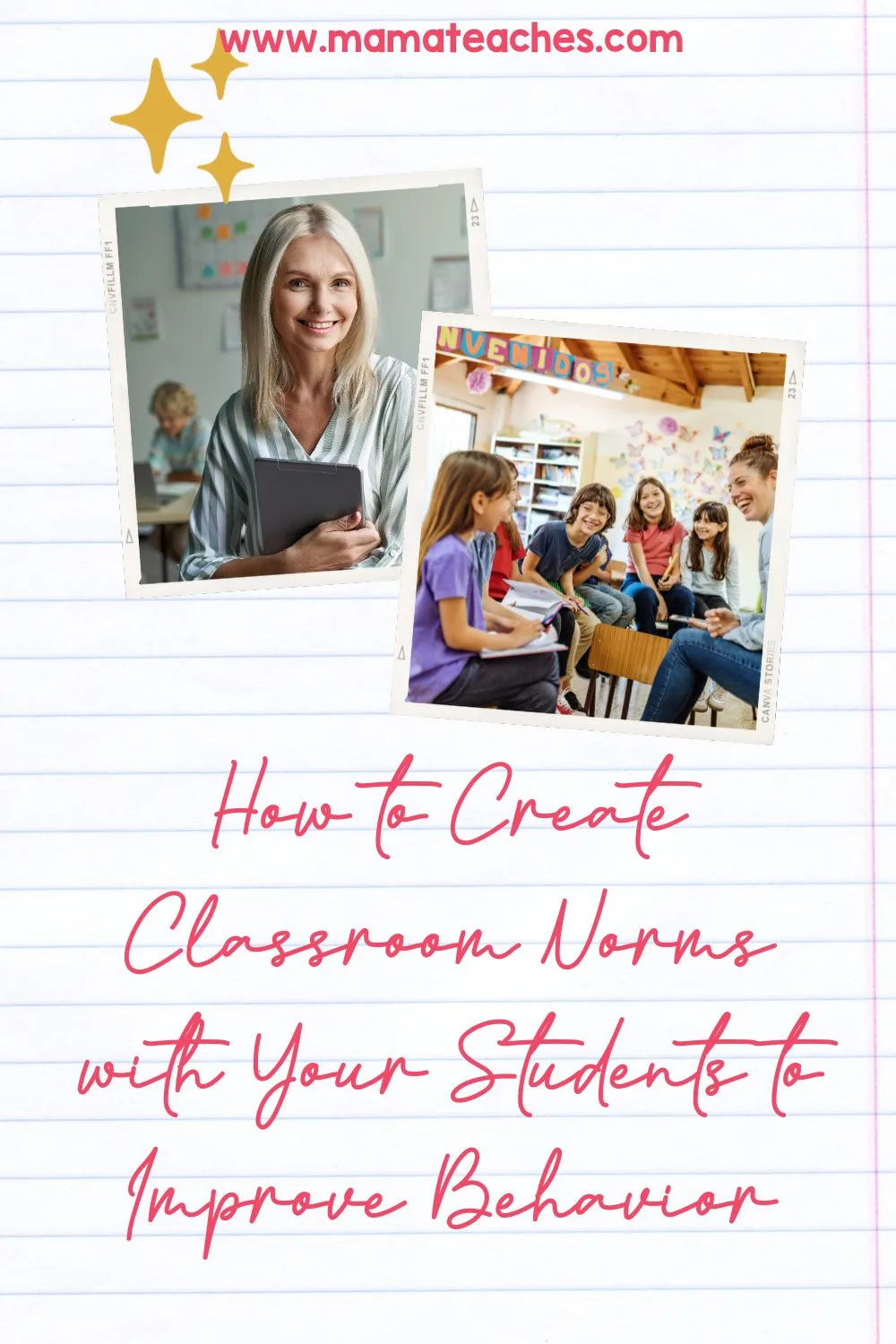Creating classroom norms collaboratively with students is a valuable approach to improving behavior and fostering a positive learning environment.

I have been hearing a lot of teachers voicing their concerns over student behavior lately.
Things have gotten out of control in a lot of schools despite teachers’ best efforts to create a learning environment that gives students enough leeway to express themselves while also keeping their behavior in check.
Some place blame on the recent pandemic and how that changed everything.
And in some cases, that’s probably part of the cause. It was a really hard time for everyone – including students!
But one thing that can help (not cure!) behavior issues is to create classroom norms – together.
Students need buy-in, and when you create the classroom norms with them, you’re making them directly invested in what’s happening in their learning environment.
Not sure how to even start? That’s okay; we have your back.
Here’s a step-by-step guide to creating classroom norms with your students so that behavior might finally improve.

This article contains affiliate links to things that you might like.
Step-by-Step Guide to Creating Classroom Norms
Start with a Discussion
Initiate a class discussion about the importance of a positive and respectful learning environment.
Explain that you want to establish shared expectations for behavior.
Brainstorming
Engage students in a brainstorming session.
Ask them to share ideas about what behaviors they think contribute to a positive and productive classroom.
Write down their responses on a whiteboard or flip chart.
Categorize and Prioritize
Organize the brainstormed ideas into categories and discuss the significance of each behavior.
Prioritize the most essential norms that will contribute to a positive classroom atmosphere.
Make sure you are giving students a voice in this.
What do they think are the most significant behaviors?
Create Positive Statements
Transform the prioritized behaviors into positive statements.
For example, instead of saying, “Don’t interrupt,” phrase it positively as “Listen actively when others are speaking.”
Discuss Rationale
Provide explanations for each norm.
Help students understand the reasons behind these expectations and how they contribute to a conducive learning environment.
If you find that your students are not really getting how the expectations impact the class, go back to asking them what they think are important behaviors.
For this to work, students have to innately understand the importance of each behavior.

Seek Consensus
Encourage students to express their opinions and make adjustments as needed.
Strive for consensus on the final set of norms to ensure a sense of ownership among students.
Create a Visual Representation
Turn the agreed-upon norms into a visual display for the classroom.
This could be a poster, a bulletin board, or any other creative representation that serves as a constant reminder.
(Side Note: I had initially thought about making poster templates up for this step for you, but I stopped because your students don’t need pre-printed posters and statements. THEY NEED TO MAKE THE POSTERS! They are the ones who need to put the markers to those pieces of poster board and create visuals of the classroom norms that they have agreed upon. Don’t skip that step. Let them make the visuals.)
Review Regularly
Regularly revisit and review the classroom norms with students.
Discuss their successes in adhering to the norms and address any challenges that arise.
This ongoing dialogue reinforces the importance of the established expectations.
Model Behavior
Model the expected behaviors consistently.
Demonstrate the norms in your own actions and interactions with students.
This sets a powerful example for them to follow.
Positive Reinforcement
Acknowledge and celebrate instances when students exemplify the established norms.
Positive reinforcement can include verbal praise, small rewards, or a collective acknowledgment of good behavior.
Address Issues Promptly
If behavioral issues arise, address them promptly and constructively.
Use these moments as opportunities to remind students of the established norms and discuss ways to improve.
Adapt as Needed
Be open to revisiting and adjusting the norms as the dynamics of the class evolve.
The norms should be living guidelines that adapt to the needs and growth of the students.
As the year progresses, your students will too.
And that means the norms may need to change, and that’s okay!

Homeschool Adaptation
But wait! If you’re a homeschooler who is struggling with student behavior, how do you implement these ideas to work for your kids?
The same exact way.
That’s right. Go through the same ten steps above and let your kids create “Homeschool Norms” together with you.
It’s funny because those who have not homeschooled before think there couldn’t possibly be behavior issues in homeschooling.
But those of us who have been there know the truth. Ha! 😉
Normalizing the Classroom Norms
By involving students in the creation of classroom norms, you foster a sense of responsibility and ownership, leading to a more positive and respectful learning environment.
But students have to play a part in it.
You can’t just override them and dictate the norms.
Together, you and your students can create a positive, exciting classroom environment!
